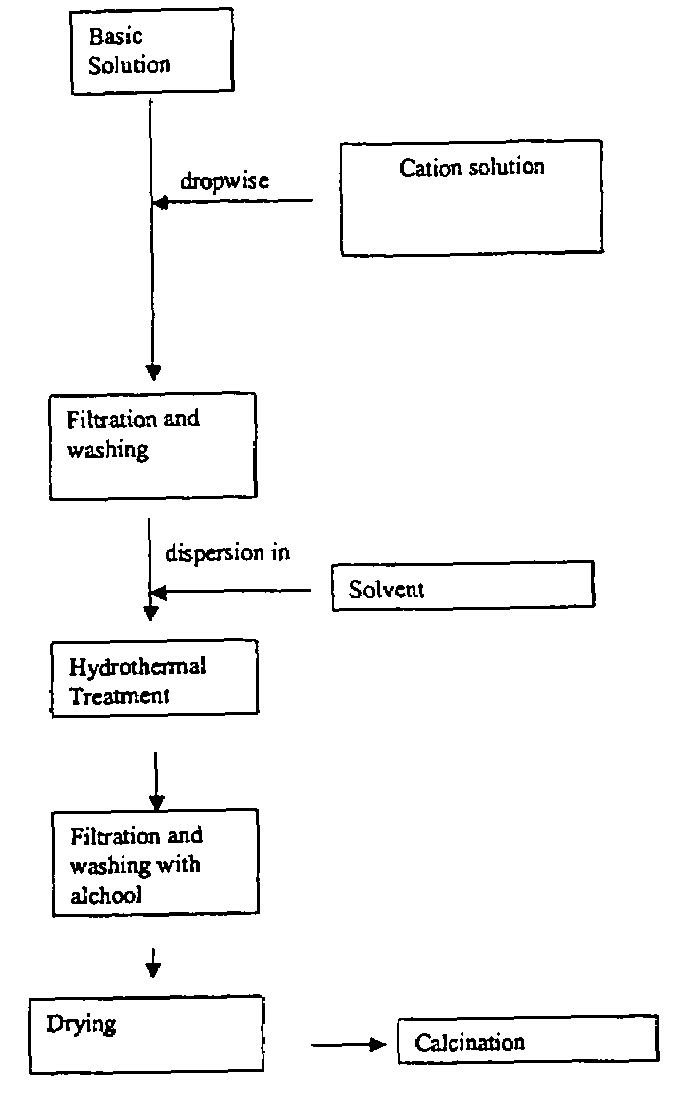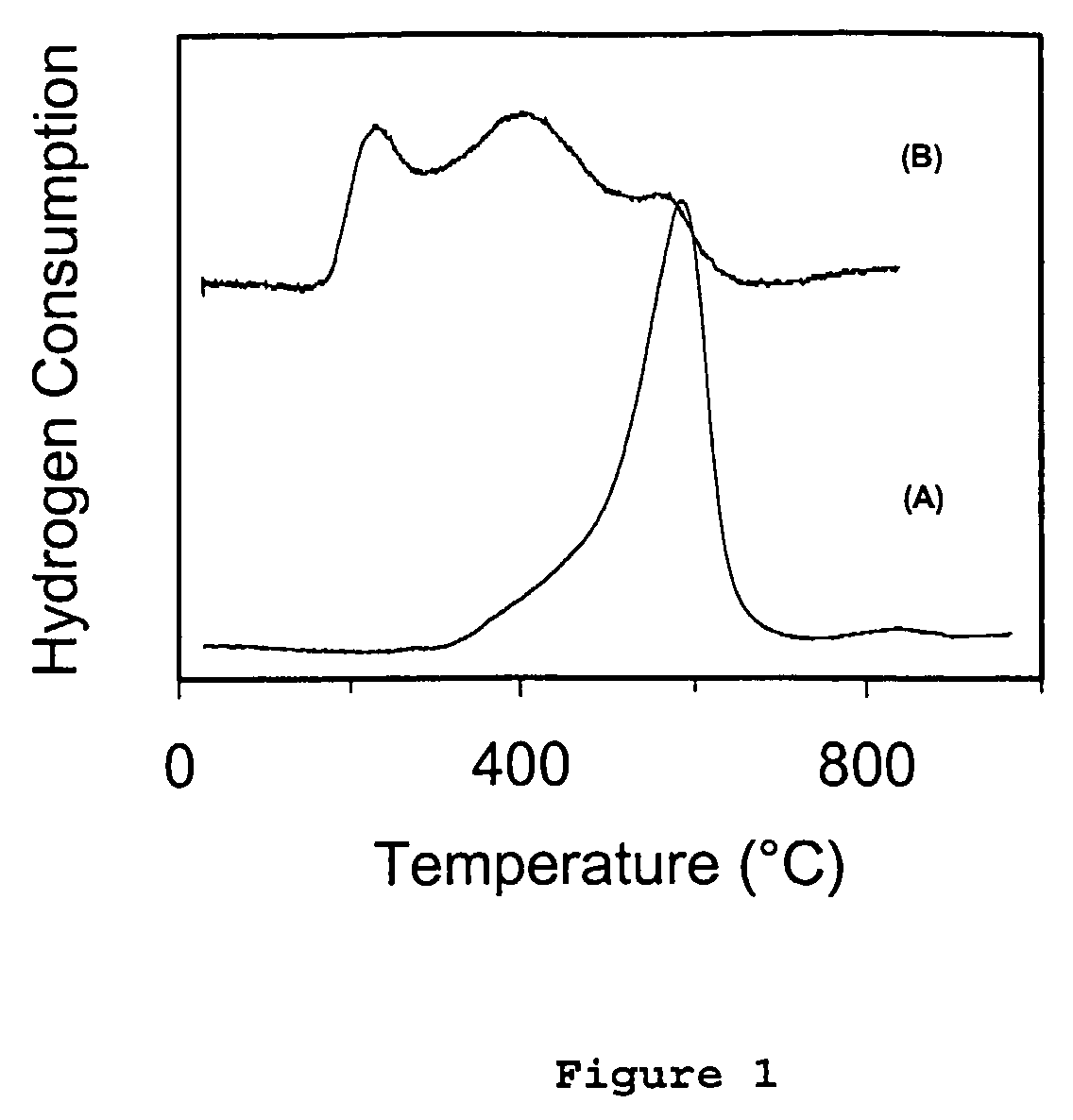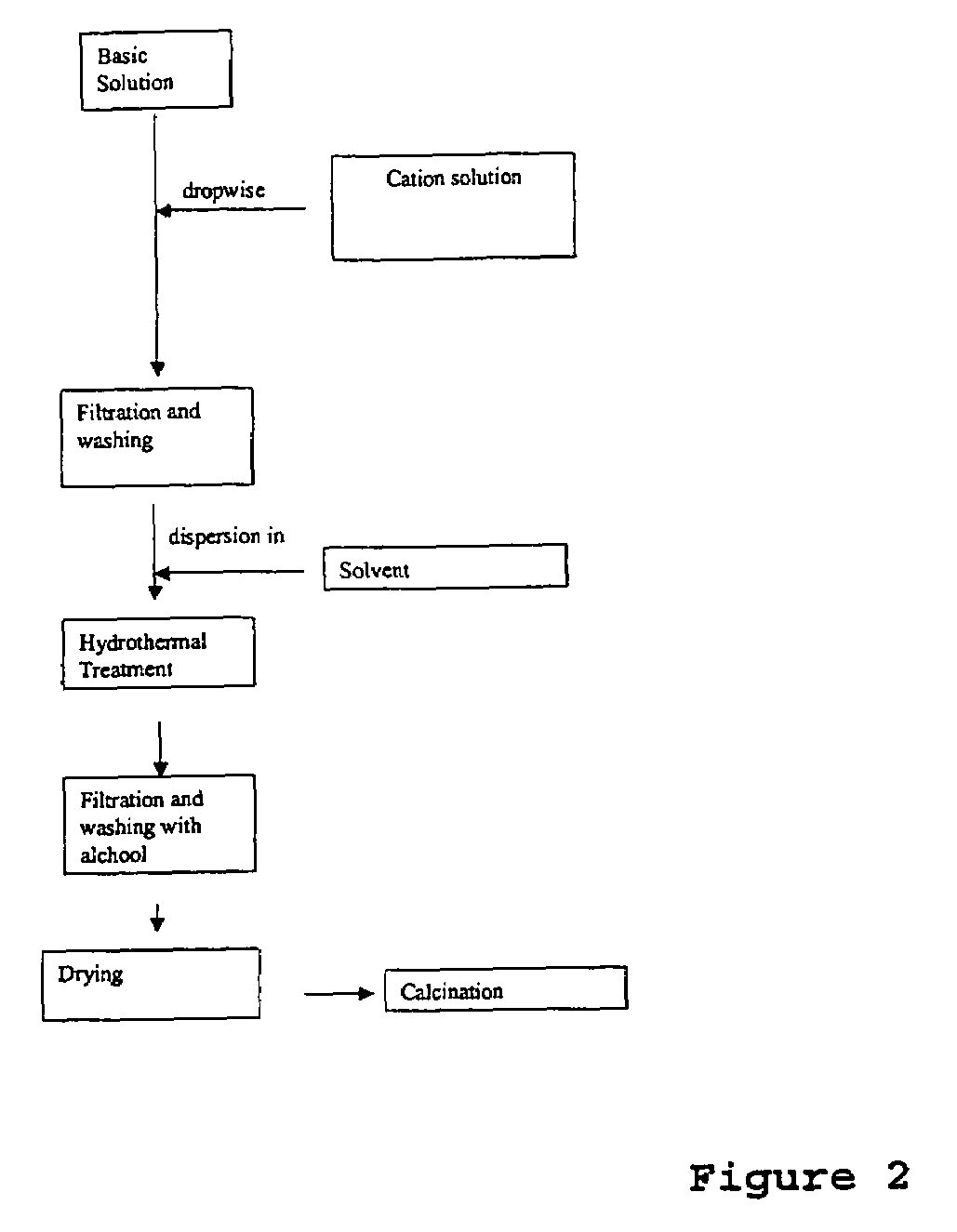THERMALLY STABLE DOPED AND UNDOPED POROUS ALUMINUM OXIDES AND NANOCOMPOSITE CeO2-ZrO2 AND Al2O3 CONTAINING MIXED OXIDES
a technology of porous aluminum oxides and nanocomposites, which is applied in the preparation of alkaline-earth metal aluminates/aluminium-oxides/aluminium-hydroxides, metal/metal-oxides/metal-hydroxide catalysts, etc., can solve the disadvantage of using costly materials for synthesis, unstable supported catalysts exposed to elevated temperatures, and expensive precursors and post-treatments. , to achieve the effect o
- Summary
- Abstract
- Description
- Claims
- Application Information
AI Technical Summary
Benefits of technology
Problems solved by technology
Method used
Image
Examples
example 1
Control Experiment TLDAl100
[0083]A 0.60 M solution of Al(NO3)3 (160 ml) was prepared from reagent grade Al(NO3)3.9H2O and distilled water. This solution is added to 60 ml of ammonia solution (30% wt) under stirring. The rate of addition is around 2.5 ml / min. The suspension is then aged for further 30 minutes and filtered. The obtained solid is dispersed in iso-propanol (400 ml) and filtered.
[0084]The solid is further dispersed in iso-propanol (400 ml) and heated at 80° C. over night. After cooling and filtration, the solid is dispersed in acetone (400 ml), filtered and dried at 120° C. for 4 h. The obtained powder is calcined at 700° C. for 5 h. The heating rate is 3° C. / min.
example 2
TLC(VII) Al100
[0085]A 0.75 M solution of Al(NO3)3 (130 ml) was prepared from reagent grade Al(NO3)3.9H2O and distilled water; 30 ml of H2O2 (30% wt) are added to this solution. The obtained solution is then added to 60 ml of ammonia (30% wt). The solid is further dispersed in water (400 ml) and heated at 100° C. over night. After cooling, the solid is filtered and dried at 120° C. over night. The obtained powder is calcined at 700° C. for 5 h. The heating rate is 3° C. / min.
example 3
TLC(III) Al100
[0086]A 0.75 M solution of Al(NO3)3 (130 ml) was prepared from reagent grade Al(NO3)3.9H2O and distilled water. 30 ml of H2O2 (30% wt) are added to this solution. The obtained solution is then added to 60 ml of ammonia (30% wt) and further processed as described in Example 1.
PUM
| Property | Measurement | Unit |
|---|---|---|
| particle size | aaaaa | aaaaa |
| particle size | aaaaa | aaaaa |
| temperature | aaaaa | aaaaa |
Abstract
Description
Claims
Application Information
 Login to View More
Login to View More - R&D
- Intellectual Property
- Life Sciences
- Materials
- Tech Scout
- Unparalleled Data Quality
- Higher Quality Content
- 60% Fewer Hallucinations
Browse by: Latest US Patents, China's latest patents, Technical Efficacy Thesaurus, Application Domain, Technology Topic, Popular Technical Reports.
© 2025 PatSnap. All rights reserved.Legal|Privacy policy|Modern Slavery Act Transparency Statement|Sitemap|About US| Contact US: help@patsnap.com



